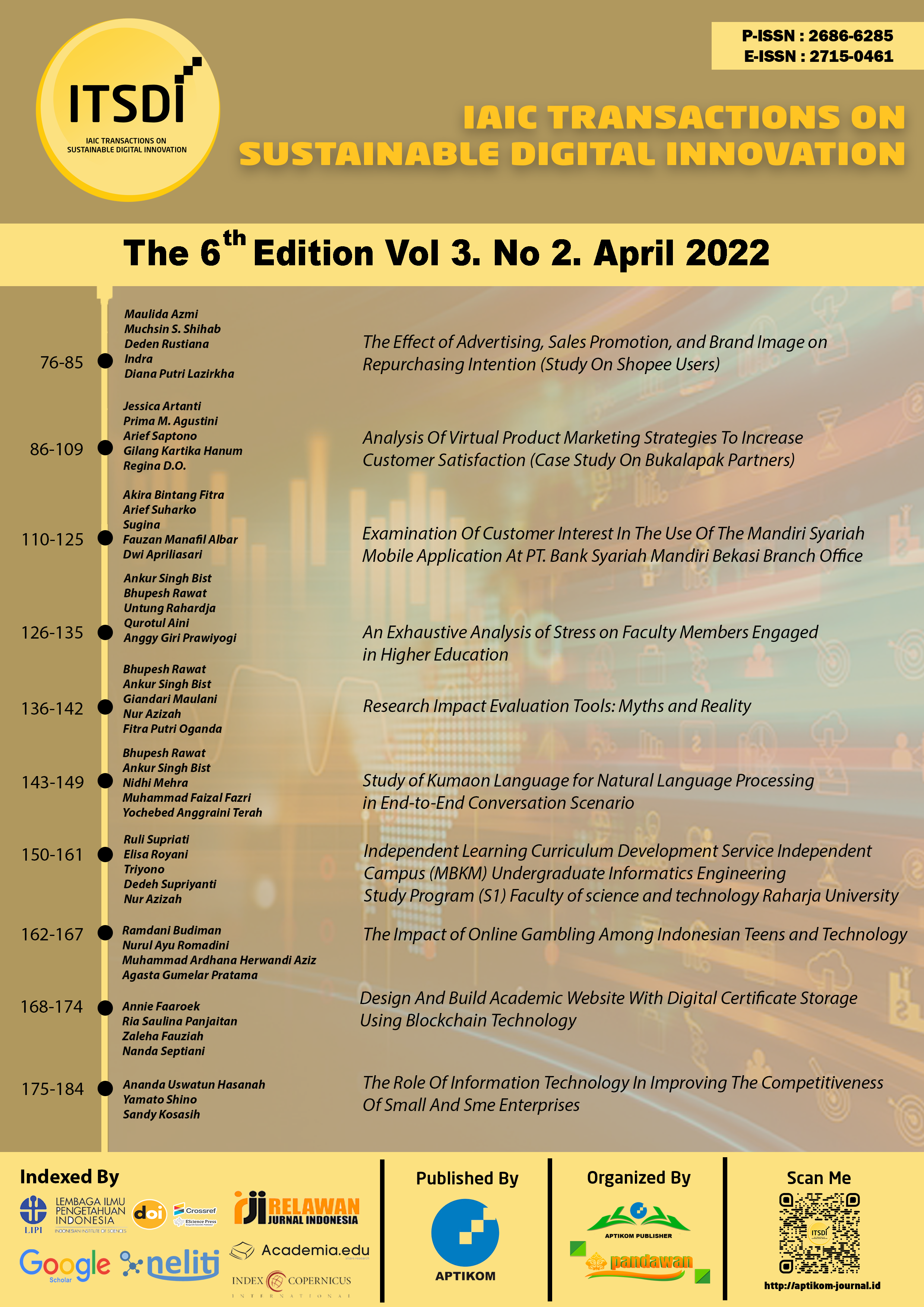Study of Kumaon Language for Natural Language Processing in End-to-End Conversation Scenario
DOI:
https://doi.org/10.34306/itsdi.v3i2.534Keywords:
Kumauni, NLP, Chat Bots, NLUAbstract
Natural language processing is one of the essential activities of artificial intelligence. There is an excellent need for chatbots that require integration into artificial intelligence applications. The local language makes the process easier. Our research aims to analyze the possibilities and challenges of implementing a chatbot in the Kumaon language. We also provide a detailed survey of the Kumaon language and map it to other languages to make it easier to process it for industrial use. This chatbot can help with various needs and services in the Kumaon language. The method used in this research is a study analysis of the Kumaon language to deal with language extinction. The novelty in this research is a chatbot in the Kumaon language with end-to-end encryption so that the service user has good security.
Downloads
References
L. Sharma, “Entrepreneurial intentions and perceived barriers to entrepreneurship among youth in Uttarakhand state of India: A cross-cultural investigation across genders,” Int. J. Gend. Entrep., 2018.
V. Ghirardi, “Hariy? Hercules k? Hair?n?: Reading the Novel Through the Lens of the Kumaoni Community,” 2020.
E. Renkovskaya, “New Indo-Aryan associative plural markers derived from Old Indo-Aryan ‘other’and their further grammaticalization,” Ling. Posnan., vol. 62, no. 2, pp. 65–80, 2020.
E. Dahl, “Pathways to split ergativity: The rise of ergative alignment in Anatolian and Indo-Aryan,” Diachronica, vol. 38, no. 3, pp. 413–456, 2021.
E. Dafouz and U. Smit, ROAD-MAPPING English medium education in the internationalised university. Springer, 2020.
N. Chatterjee, “Colonialism and Knowledge in Grierson’s Linguistic Survey of India, by Javed Majeed Nation and Region in Grierson’s Linguistic Survey of India, by Javed Majeed.” Oxford University Press UK, 2021.
A. P. Chaves and M. A. Gerosa, “How should my chatbot interact? A survey on social characteristics in human–chatbot interaction design,” Int. J. Human–Computer Interact., vol. 37, no. 8, pp. 729–758, 2021.
L. A. Faza, P. M. Agustini, S. Maesaroh, A. C. Purnomo, and E. A. Nabila, “Motives For Purchase of Skin Care Product Users (Phenomenology Study on Women in DKI Jakarta),” ADI J. Recent Innov., vol. 3, no. 2, pp. 139–152, 2022.
E. A. Nabila, S. Santoso, Y. Muhtadi, and B. Tjahjono, “Artificial Intelligence Robots And Revolutionizing Society In Terms Of Technology, Innovation, Work And Power,” IAIC Trans. Sustain. Digit. Innov., vol. 3, no. 1, pp. 46–52, 2021.
M. Prawira, H. T. Sukmana, V. Amrizal, and U. Rahardja, “A Prototype of Android-Based Emergency Management Application,” 2019 7th Int. Conf. Cyber IT Serv. Manag. CITSM 2019, 2019, doi: 10.1109/CITSM47753.2019.8965337.
S. Barve, S. Gaikwad, and D. Nimbane, “Chat-Bot For College Management System,” Arti Nimbane, Dinesh, Chat-Bot Coll. Manag. Syst. (MAY 7, 2021), 2021.
L. K. Fryer, K. Nakao, and A. Thompson, “Chatbot learning partners: Connecting learning experiences, interest and competence,” Comput. Human Behav., vol. 93, pp. 279–289, 2019.
N. Lutfiani, U. Rahardja, and K. T. Khasanah, “The Development Viewboard As an Information Media at Official Site Asosiation,” APTISI Trans. Manag., vol. 6, no. 1, pp. 10–18, 2022.
W. Zhou, “Vocabulary analysis of English major textbooks based on range software,” in Journal of Physics: Conference Series, 2021, vol. 1856, no. 1, p. 12020.
J. C. Farah, V. Sharma, S. Ingram, and D. Gillet, “Conveying the Perception of Humor Arising from Ambiguous Grammatical Constructs in Human-Chatbot Interaction,” in Proceedings of the 9th International Conference on Human-Agent Interaction, 2021, pp. 257–262.
L. Fryer, D. Coniam, R. Carpenter, and D. L?pu?neanu, “Bots for language learning now: Current and future directions,” Lang. Learn. Technol., vol. 24, no. 2, pp. 8–22, 2020.
D. Kent, “A room with a VUI–Voice user interfaces in the TESOL classroom,” Teach. English with Technol., vol. 20, no. 3, pp. 96–123, 2020.
J. Kuang, S. Ashraf, U. Das, and C. Bicchieri, “Awareness, risk perception, and stress during the COVID-19 pandemic in communities of Tamil Nadu, India,” Int. J. Environ. Res. Public Health, vol. 17, no. 19, p. 7177, 2020.
Downloads
Published
How to Cite
Issue
Section
License
Copyright (c) 2021 Bhupesh Rawat, Ankur Singh Bist, Nidhi Mehra, Muhammad Faizal Fazri, Yochebed Anggraini Terah

This work is licensed under a Creative Commons Attribution 4.0 International License.














